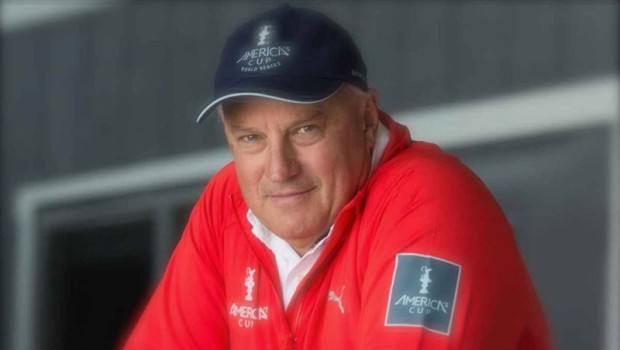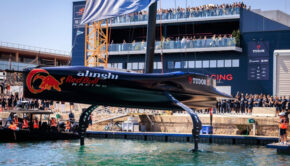America’s Cup: Challenger Boss backs Protocol
Published on June 17th, 2014
Team Australia syndicate head Iain Murray was one of the principal negotiators of the Protocol for the 35th America’s Cup. As CEO and Regatta Director of the 34th America’s Cup, Murray was on the front lines of one of the more star-crossed Cups in recent memories: the lack of entries and death of Artemis Racing crewman Bart Simpson being two of the primary detractions. Murray was keen to address topics such as cost savings and safety in the new Protocol, and thinks those goals have been achieved.
Here he shares insight to the process with Sailing World…
What do you think this Protocol achieves? It achieves a workable platform to pick up where the 34th America’s Cup left off. The big thing with the last Cup is that Oracle spent a lot of money and wasn’t prepared to do that again. So this document has taken up where the event left off last year, trying to promote efficiency, cost savings and strong competition. It’s probably more focused on the events, a shorter, sharper focus on events.
Who were the main negotiators that worked on the document? We dealt with three people, Oracle Team USA’s Russell Coutts, Grant Simmer and ACEA lawyer Sam Hollis. On our part, there was myself, Team Australia COO Michael Jones, rules advisor Richard Slater, and the Oatleys [supporters of the challenge].
In late March you said the negotiations were in a stalemate. What were some of the sticking points? Split venues, number of boats, nationality, commercial rights, web page—there were a whole lot of things.
You’ve been clear in stating that cost savings is a primary goal; how have costs been reduced and how much of a cost savings might teams realistically see? There are opportunities for teams to save. There’s a realization for teams to work together. If they chose to do so, there’s a potential for big savings. If competitors want to spend huge amounts of money, they can. If they want huge numbers of designers and researchers and an expensive staff for three years, they’re going to spend a lot of money. Hopefully what we’ve achieved is a more sensible approach. There are limitations on development that will reduce budgets. At the end of day, the Cup is looking for more competitive teams. I stress more competitive, as opposed to just more. Look back at where we were. The last Louis Vuitton Cup was a disaster. Had the Kiwis won the Cup 9 to 1, it would’ve been a disaster, too. Luckily, the competition turned around and it’s been hailed as the best Cup. But it was within one race of being a lopsided competition. Clearly people enjoyed the strong competition at the end. What we need is lots of strong teams to ensure all races are good races.









 We’ll keep your information safe.
We’ll keep your information safe.